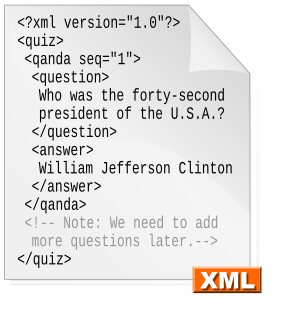It is proposed that this article be deleted because of the following concern: Not notable. There are no independent sources If you can address this concern by improving, copyediting, sourcing, renaming, or merging the page, please edit this page and do so. You may remove this message if you improve the article or otherwise object to deletion for any reason. Although not required, you are encouraged to explain why you object to the deletion, either in your edit summary or on the talk page. If this template is removed, do not replace it . The article may be deleted if this message remains in place for seven days, i.e., after 15:43, 26 May 2018 (UTC). Nominator: Please consider notifying the author/project: {{subst:proposed deletion notify |XML User Interface|concern=Not notable. There are no independent sources}} ~~~~ |
| Stable release | 3.2 / February 8, 2008 |
|---|---|
| Written in | Java |
| Operating system | Cross-platform |
| Type | GUI |
| License | Mozilla Public License |
| Website | www |
XML User Interface (XUI) is a Java and XML framework for building rich client, desktop and mobile applications. The framework can save much of the code typically needed to build an application with consequent savings in development time, maintenance costs and hence results in greater stability.

Extensible Markup Language (XML) is a markup language that defines a set of rules for encoding documents in a format that is both human-readable and machine-readable. The W3C's XML 1.0 Specification and several other related specifications—all of them free open standards—define XML.
In computer programming, a software framework is an abstraction in which software providing generic functionality can be selectively changed by additional user-written code, thus providing application-specific software. A software framework provides a standard way to build and deploy applications. A software framework is a universal, reusable software environment that provides particular functionality as part of a larger software platform to facilitate development of software applications, products and solutions. Software frameworks may include support programs, compilers, code libraries, tool sets, and application programming interfaces (APIs) that bring together all the different components to enable development of a project or system.
